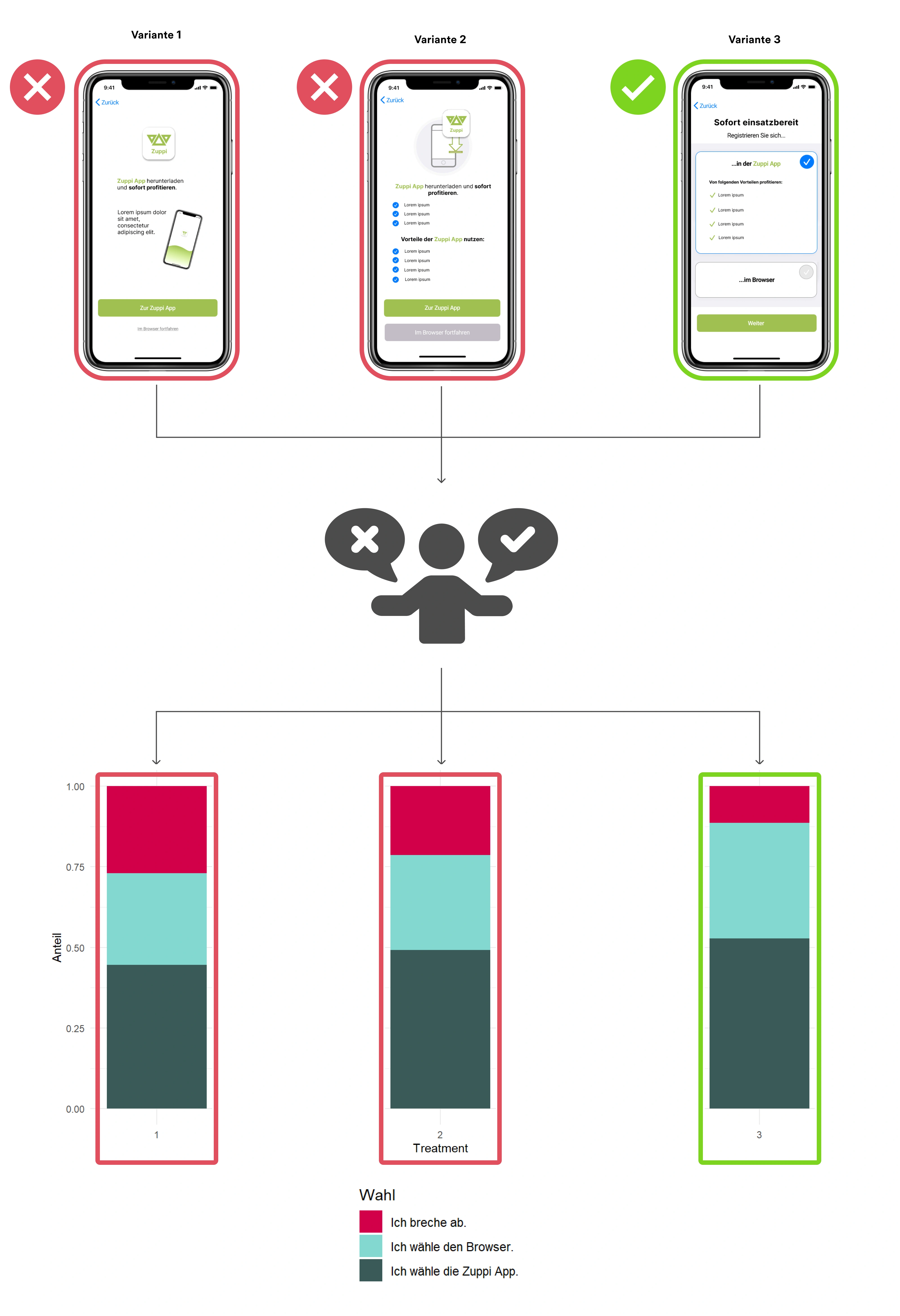New technologies, the copyability of ideas, changing customer needs - the business world is in upheaval. Times of change, as we are currently experiencing, bring uncertainty: How to keep up? What does it take to be successful? How should we respond to new customer needs? However, change always provides an opportunity to prove oneself in the market. So those who know what it takes in a changing market and who manage to reduce uncertainty with facts have massive competitive advantages. Behavioral economics experiments provide insights and facts and raise the quality of your offering to the next level.
Behavioral economics is still a young research discipline. It explains why people do what they do. As such, it offers approaches on how to guide human behavior. Behavioral economics makes use of several psychological principles, on the basis of which behavior-guiding measures, so-called nudges, are developed. Behavioral economics experiments are used to measure and further enhance the effect and effectiveness of such nudges.
Behavioral economics experiments can be applied anywhere. Recently, we optimized a registration process that users could go through either via an app or via a website (see article in Netzwoche). The client's primary goal was to increase the number of registrations. As many as possible should be done via app. To achieve these goals, we created an upstream switch page where users could choose whether they wanted to register in the app or on the web. For the experiment, we created variants of the switch page with a series of nudges and tested them quantitatively with users. In this way, we identified the variant with the largest effect in terms of target behavior.

Figure 1: Simplified procedure of a behavioral economics experiment.
Behavioral economics experiments provide facts that are invaluable in an increasingly unpredictable world. Because facts provide clarity, reduce uncertainty, increase the quality of the offer and thus offer a decisive added value in a highly competitive environment.
Would you like to learn how behavioral economics experiments can be applied to your case? Or would you like to know how we at Ergonomen have helped our clients to achieve more turnover and (project) security? Then contact us!
We look forward to hearing from you.

Consultant
Holding a master’s degree in Behavioral Economics from the Erasmus School of Economics in Rotterdam, Sandro Zuppiger complements The Ergonomen with his interest in human behavior and behavior change. With his background in marketing, strategy and communication, Sandro Zuppiger concentrates on the area of behavioral economics, business development, and marketing. He likes to spend his free time in nature and enjoys playing music.